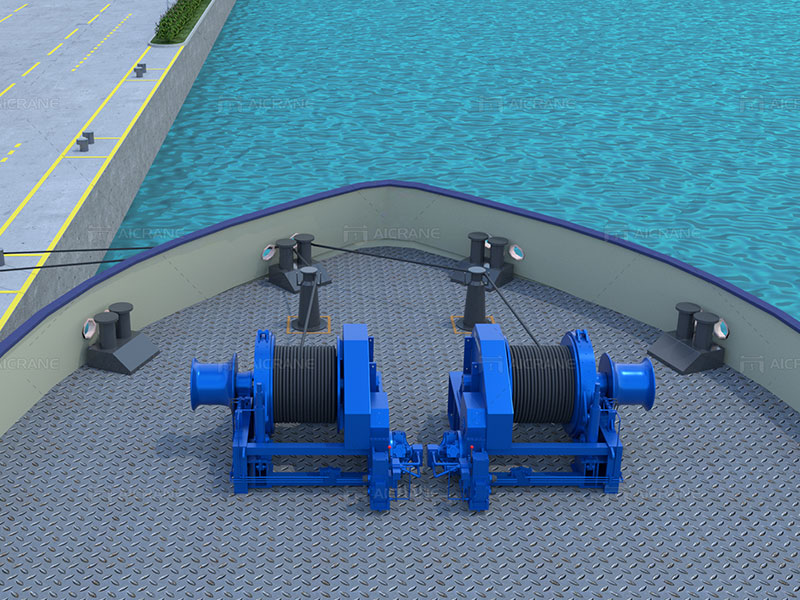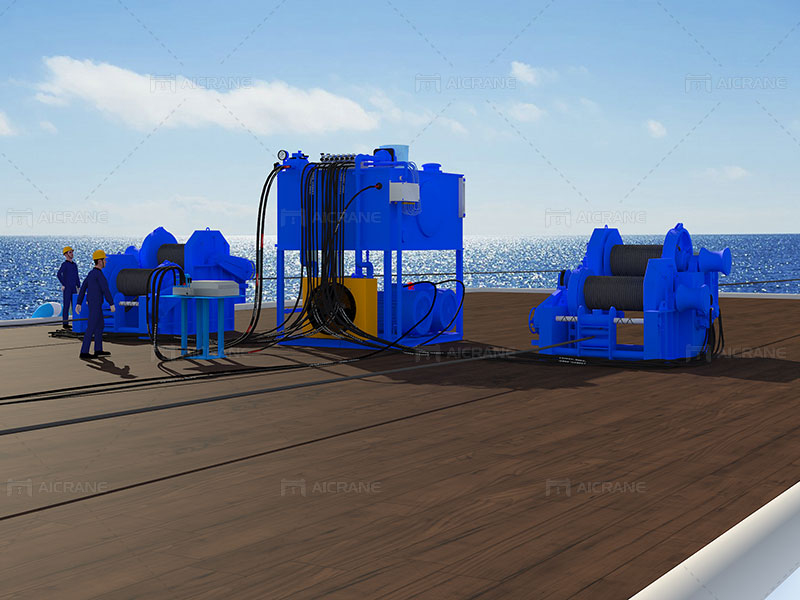Mooring winches are essential components in the maritime industry, providing the crucial function of securing ships to docks or other mooring points. The reliability and efficiency of mooring winch systems play a pivotal role in ensuring safe and efficient vessel operations in ports around the world. Over the years, advances in technology have significantly improved the design, performance, and safety of mooring winches. In this article, we will explore the latest innovations and breakthroughs in mooring winch technology that are reshaping the way ships are secured and ports operate.

Enhanced Automation for Precise Control
One of the most notable advances in mooring winch system technology is the integration of advanced automation systems. Automation not only simplifies the mooring process but also enhances precision and safety. These systems offer several benefits:
1. Dynamic Positioning Systems
Modern mooring winches can be linked with dynamic positioning systems (DPS) to ensure vessels remain in the desired location with pinpoint accuracy. DPS uses GPS, sensors, and thrusters to automatically adjust a vessel’s position, allowing mooring winches to compensate for changes in wind, tide, or current conditions.
2. Load Monitoring and Tension Control
Automation allows for real-time monitoring of the tension in mooring lines, which is critical for preventing line failures and ensuring the safety of personnel and vessels. Automated tension control systems can adjust the winch operation to maintain optimal line tension, reducing the risk of accidents during the mooring process.
3. Remote Operation
Many modern mooring winch systems can be operated remotely from a control center or even a tablet or smartphone. This remote access allows for precise control and monitoring of the mooring process, even in challenging weather conditions, enhancing safety and efficiency.

Energy-Efficient Electric Winches
Traditionally, hydraulic systems were used in mooring winches for their power and reliability. However, advances in electric winch technology have made them a viable and eco-friendly alternative. Electric mooring winches offer several advantages:
1. Reduced Environmental Impact
Electric winches produce fewer emissions than their hydraulic counterparts, contributing to cleaner and more sustainable port operations. They are also quieter, which can help reduce noise pollution in port areas.
2. Energy Recovery
Some electric mooring winches are equipped with regenerative drives, which capture and store excess energy generated during winching operations. This stored energy can be reused, further improving energy efficiency and reducing operating costs.
3. Precise Control
Electric winches provide precise control over line speed and tension, making them ideal for delicate mooring operations. Their responsiveness allows for rapid adjustments, improving safety during mooring and unmooring procedures.
Materials and Coating Innovations
Advancements in materials science have led to the development of high-strength synthetic ropes and improved coatings for mooring winch drums. These innovations offer several benefits:
1. Synthetic Ropes
Modern mooring winches increasingly use high-strength synthetic ropes made from materials like Dyneema and Spectra. These ropes are not only lighter than traditional steel wire ropes but also offer superior strength and durability. They are also less prone to corrosion.
2. Anti-Corrosion Coatings
Corrosion can significantly impact the lifespan of mooring winch components. Advanced anti-corrosion coatings, such as zinc-nickel alloy coatings and ceramic-based coatings, provide superior protection against the harsh marine environment, prolonging the winch’s lifespan and reducing maintenance costs.
Improved Safety Features
Safety is paramount in maritime operations, and modern mooring winches are equipped with advanced safety features to protect both personnel and equipment:
1. Emergency Stop Systems
Mooring winches are now equipped with emergency stop systems that allow for immediate cessation of winch operations in case of a safety threat. These systems can be activated by the operator or automatically triggered by certain conditions.
2. Load Limiting Systems
Load limiting systems use sensors to monitor the load on the mooring winch and prevent overloading. If the load exceeds safe limits, the winch will automatically stop or reduce tension, preventing accidents and equipment damage.
3. Remote Monitoring and Diagnostics
Modern mooring winches are often equipped with remote monitoring and diagnostics capabilities. This allows for real-time monitoring of winch performance and the early detection of potential issues, reducing downtime and maintenance costs.
Integration with Port Management Systems
Another significant advancement in mooring winch technology is the integration of these systems with broader port management and logistics systems. This integration allows for seamless coordination between vessel arrivals, berthing, and mooring operations:
1. Berth Allocation Optimization
Port management systems can optimize berth allocation based on vessel size, cargo type, and other factors. This ensures that the right mooring winches for ships and equipment are available for each vessel’s specific needs.
2. Real-time Communication
Integration with port management systems enables real-time communication between vessels, terminal operators, and mooring winch operators. This coordination minimizes delays and ensures efficient vessel turnaround times.
Conclusion
Advances in mooring winch technology are transforming the maritime industry by improving safety, efficiency, and sustainability in port operations. Enhanced automation, energy-efficient electric winches, materials and coating innovations, improved safety features, and integration with port management systems are among the key innovations driving these positive changes.
As technology continues to evolve, mooring winches will play an even more critical role in ensuring the smooth and safe operation of ports worldwide. These advancements not only benefit port operators but also contribute to the overall efficiency and reliability of global trade and maritime transportation, making them a vital component of the modern maritime landscape.